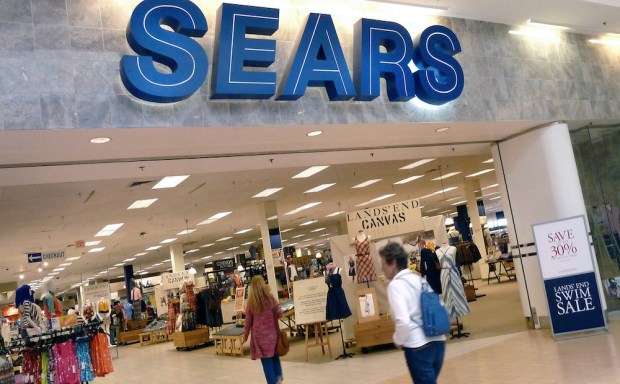Can Sears Survive?

While hard to imagine now — a week off of another round of disastrous earnings and falling share prices — Sears at one time and for a long time was probably the most innovative retailer in America, if not the world.
The Sears of today may have attracted the unfortunate moniker of “dead retailer walking,” but for much of its 130 years of operation what Sears has actually been best known for is being the most cutting-edge retailer out there. Sears wasn’t just a retailer that gave customers what they wanted; for a long time Sears was a retailer that defined what customers wanted.
In the late 19th century, during the era of the low stock general store, Sears, Roebuck and Co. invented mail order catalogs to change the face of American consumption, as consumers were no longer limited to goods within a day’s drive (or horse drawn buggy-ride). Sears was also the pioneer of the large scale department store that sold everything from clothes to appliances to firearms. Something for everyone was not quite a concept they invented, but it was one they perfected for 20th century retail in the U.S.
They were also a pioneering anchor store and an early driver of credit products for consumers with the installment loans they created — customer installment loans which gave cash-strapped consumers access to revolving lines of credit that grew the more they paid Sears. That program grew in prominence until 1985, when it formally branded as the Discover Card. (Sears sold off the Discover card in the early 1990s).
Allstate Insurance is also a Sears creation. Born out of a tire line, the idea was that consumers could insure their car while having it worked on at a Sears service center.
And while a favored narrative is that the Internet came along and brought with it stormy waters, Sears’ troubles date back far before the great digital awakening — when its “a little bit of everything” department store brand saw itself disrupted by general merchandise big-box retailers like Walmart with more selection and better pricing – or category killers like Toys “R” Us that consistently outdrew them on supply.
Unlike its physical retail counterparts that spent the late ’90s rapidly expanding only to come crashing hard into the 21st century and the era of widespread online commerce, Sears was already limping along when Ed Lampert, CEO of hedge fund ESL, acquired Sears. But limping at that point was a stock price of $126 – which within two years had grown to $178, mostly due to Lampert’s extremely aggressive cost-cutting measures.
However, the Great Recession came calling in 2008 and Sears found its revenue wiped out as home developing and building ground nearly to a halt and its main profit center of appliance sales fell off a cliff.
And that seems to be the blow Sears could never quite recover from. Its rapid wave of closing and cost-cutting had, in the description of many analysts, simply left the firm too hollowed out to compete. Sears had focused on thinking small just as the digital era was rewarding retailers that were thinking big.
So has the damage been fatal?
As this story goes to print, Sears’ stock is trading at just a cent over $11 per share after the latest wave of investor sell-offs after yet another quarterly earnings report indicated falling sales, dropping revenue and falling foot traffic.
And stores will continue to close by the dozens. As of late April, Sears has announced 78 store closings newly scheduled for 2016, including 65 Kmarts, 3 Super K stores, and 10 Sears stores.
“We’re focusing on our best members, our best categories and our best stores as we work to accelerate our transformation,” Lampert said in a statement along with the press release announcing store closings.
However, the latest news isn’t all closures. Sears is also looking to reform and do some light innovating with a new store design. Pairing down to its consistently mostly popular category, Sears is test running a 10,000 square foot appliance-only store in Colorado as a potential next direction for the firm.
“Appliances is one of our best categories,’’ noted Leena Munjal, SVP of customer experience and integrated retail for Sears Holdings. “We’re trying to figure out how you take the physical store and complement it with the online capability to make it a really powerful experience for our customers.’’
Apart from the singularity of focus, the new appliance-focused Sears will also offer consumers more interactive experiences, including a 122-inch interactive digital display that will help customers see how a new refrigerator, oven or other appliance might look in their kitchen — the hope being to capture consumers looking for new ways to shop for their appliances.
And while the move generated a good deal of headline love from retail journalists, experts in the field seem far from convinced that it will do much to change Sears’ overall story.
“Customers only buy major appliances every eight years or so,’’ noted Columbia Business school head of retail studies Mark Cohen. Cohen was also once the CEO of Sears Canada.
“It’s not a frequent purchase, so for this kind of strategy to have any meaning financially, it would require that they open a network of the stores … At the end of the day this is inconsequential.’’
And that, it seems, is a fine statement of the overall worries with Sears. No matter how many stores it closes or appliances it sells, it is inconsequential, because the sun has set on Sears’ historically greatest talent. Innovation and filling needs for customers by first helping create those needs.
And while second acts are always possible – JC Penney has had a surprisingly good run after similarly tough times – in Sears’ case that is looking somewhat less likely with every quarterly report that comes out.
